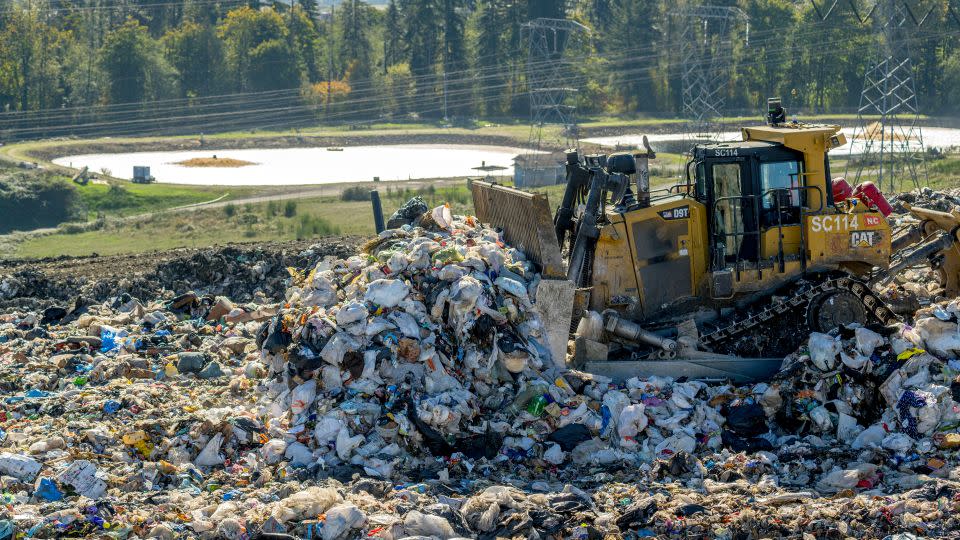A potent planet-warming gas is seeping out of US landfills at rates higher than previously thought, scientists say
Garbage piling up in landfills isn’t just an eyesore, it’s also a climate nightmare, belching out large amounts of planet-warming methane gas. In the United States, the problem could be much worse than previously thought, according to a new study measuring methane pollution at hundreds of landfills across the country.
Scientists flew over more than 200 landfills across 18 states from 2018 to 2022, in what they say is the largest measurement-based survey of America’s landfills. Their results revealed average methane emissions were much higher than those officially reported, according to the study published Thursday in the journal Science.
Methane — an invisible, odorless gas with over 80 times more warming power than carbon dioxide in the near-term — is produced by various sources, the biggest of wich are oil and gas and agriculture. Landfills tend to be a less well-known methane source, but they also have a huge impact, estimated at around 20% of global human-caused methane emissions.
Landfills produce methane when organic waste such as food scraps, paper and wood decompose without oxygen, creating the perfect environment for methane-producing bacteria.
Most landfills in the US are federally required to measure methane emissions four times a year through walking surveys using handheld sensors. The accuracy of these surveys can vary, as people tend to avoid areas that are unsafe to walk through, including steep slopes and where garbage is actively being dumped, according to the study.
“Those types of measurements really are not designed to do anything in terms of emissions,” but rather just detect methane “hotspots,” Daniel Cusworth, lead author and scientist with the non-profit Carbon Mapper, told CNN.
Estimates of landfill methane emissions therefore tend to be based on models rather than direct measurements — but this means potential gaps in data. Advanced monitoring systems using remote sensing from aircraft, drones and satellites can provide a more accurate and comprehensive picture, the report noted.
Using airborne imaging spectrometers, the scientists detected methane plumes at 52% of the landfills they measured. This far exceeds the rate of methane detection in airborne studies undertaken for the oil and gas sector, the report notes.
The results show current reporting systems, such as the Environmental Protection Agency’s Greenhouse Gas Reporting Program (GHGRP), are missing large methane sources, the scientist concluded. Average methane emission rates from landfills were 1.4 times higher than those being reported to the GHGRP, the report found.

The study also found landfill methane emissions were generally much more persistent than those from oil and gas production, with 60% lasting for multiple months or even years.
“When we would come back and survey again later in a few weeks or a few months … or over the course of a few years, we always saw [the methane],” Cusworth said.
Rob Jackson, professor of environmental science at Stanford University, who was not involved with the study, said landfills were “super-emitters.”
“Airborne data such as these verify what we’ve been seeing on the ground for decades,” he told CNN.
Unfortunately, the problem of landfills is unlikely to go away anytime soon. “Even in a future where there is not a reliance on fossil fuels, humans will likely still be generating waste,” Cusworth said. “Even if we transition to cleaner fuels, we’re still going to be dealing with waste management.”
Scientists say the rapid reduction of methane is one of the most effective ways to slow climate change because of its powerful short-term planet-heating impact.
Yet most methane policies in the US target the oil and gas industry. “If we’re going to hit our climate targets, reductions in methane emissions can’t come from oil and gas alone,” Cusworth said. “Landfills should be garnering a similar type of attention as oil and gas.”
For more CNN news and newsletters create an account at CNN.com

